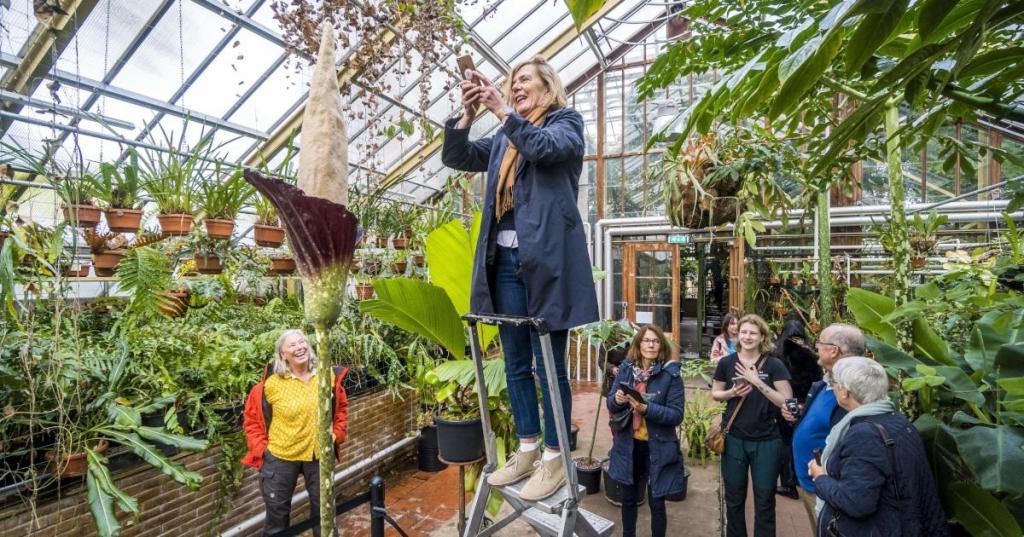A botanical garden in the Netherlands is home to a rare “penis plant,” the first of its kind to bloom in Europe since 1997. It is only the third time ever that one of the plants, whose scientific name is Amorphophallus decus-silvae, has ever bloomed in Europe, far from its native tropical rainforest environment in Indonesia. The plant stands over three feet tall, with a narrow stem that reaches over six feet high.
The plant bloomed in the enclosed Leiden Hortus Botanicus garden at the University of Leiden late last week, reports USA Today. The last time a “penis plant” bloomed at the garden was 25 year ago, and that was a different plant. They are famously difficult to bloom, and the plant that did is 6 years old. It began producing a flower bud in mid-September. On Oct. 19, the garden revealed that visitors could plan to see it and smell it.
Videos by PopCulture.com
Not only does the plant have a unique look, it also lets out a “pungent smell of rotting flesh,” according to the garden. The stench escapes during the female bloom phase, when the phallus-shaped part, called the spadix, heats up, reports CNN. Flies and other pollinators are attracted to the plant by the smell, then they are covered in the pollen produced during the penis plant’s male bloom phase. Since there are no other penis plants at the Leiden Hortus Botanicus, staffers are collecting the pollen for later or to send to other gardens.
Very few Amorphophallus decus-silvae plants exist in botanical gardens around the world. It is related to the Amorphophallus titanum, which is also known as the “corpse flower” and “giant penis plant,” and Amorphophallus gigas. The Chicago Botanic Garden, New York Botanical Garden, and Washington’s U.S. Botanic Garden all have “corpse flowers” in their connection. They also emit an awful smell when they bloom.
These plants can go years between blooms, Susan Pell, the deputy executive director of the U.S. Botanical Garden, told CNN. The plats all bloom from corms, similar to underground tree trunks, Pell said. “That bloom is just using up all of the energy that’s been stored in that corm,” Pell noted. “And so in order to bloom again, that corm has to produce a series of leaves over… somewhere between probably three and 10 or 12 years in order to get enough energy built back up in the corm to support a bloom, which really occupies that corm for more than a year.”








